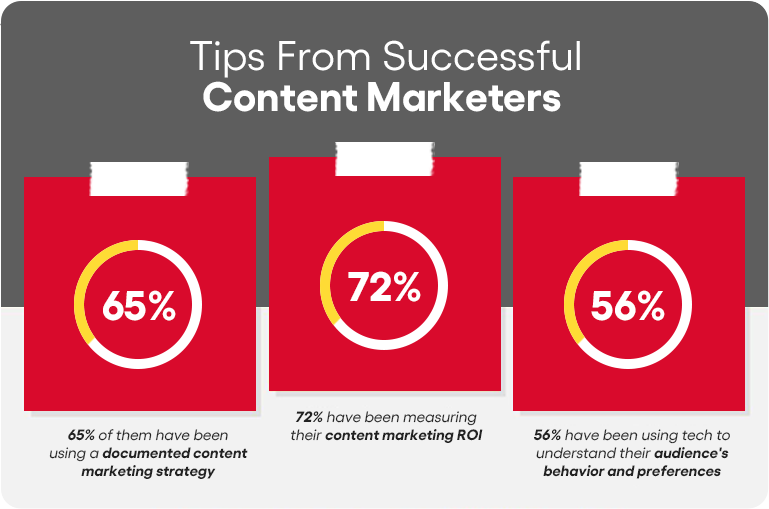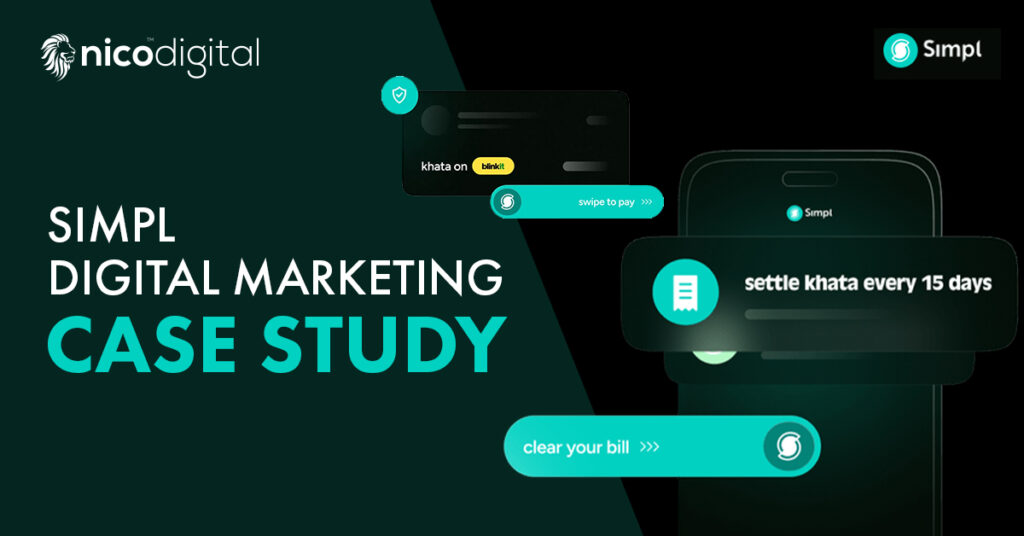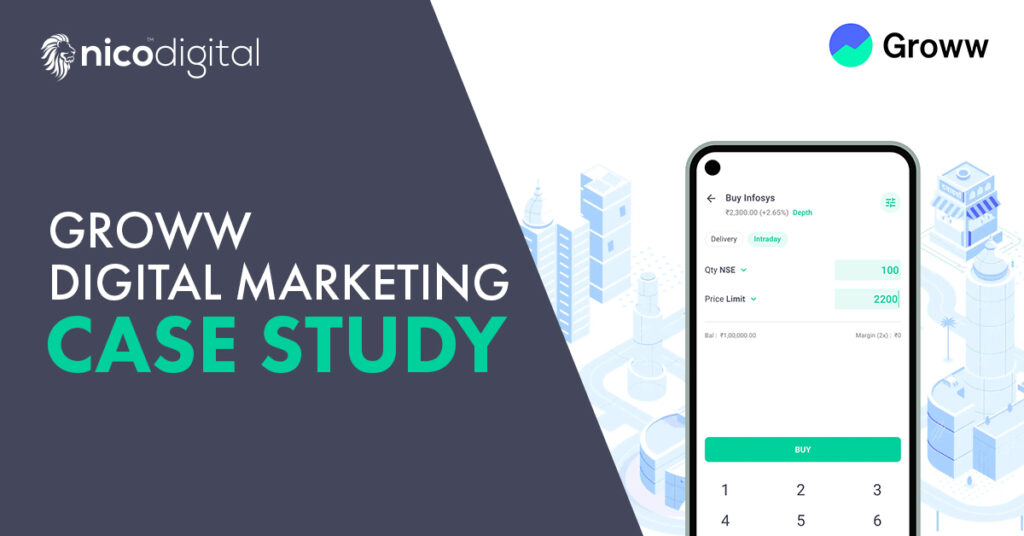
The year was 1996 when Bill Gates dropped the bomb “Content is King”. And since then things haven’t been the same again in the content marketing industry.
Producing exceptional content establishes credibility and influence, and has the potential to draw potential customers away from rival companies.
![]() As per reports from the Content Marketing Institute, the connection between content and revenue has always been challenging to establish. However, with the recent surge in the significance of content marketing, every dollar spent matters.
As per reports from the Content Marketing Institute, the connection between content and revenue has always been challenging to establish. However, with the recent surge in the significance of content marketing, every dollar spent matters. ![]()
The most optimal content marketing strategy is one that captivates the audience and converts them into customers.
So, how do you leverage content to drive B2B growth?
Let’s dig deep into the lasting relationship between content and revenue.
Table of contents
Content and Revenue: Jack n Jill
Content and revenue go hand-in-hand. Just like Jack n Jill when they went up the hill (read: growth).
So, don’t be surprised when we tell you from recent market insights that 65% of the most successful B2B marketing professionals have a documented strategy for content marketing.

Source: https://contentmarketinginstitute.com/articles/connecting-content-revenue
Amongst the various duties that B2B marketers are responsible for, their primary task is to reach out and establish connections with potential customers.
Having a strategic plan for your content creation emphasizes the underlying purpose of your content, which in turn helps to:
![]() Boost marketing outcomes
Boost marketing outcomes
![]() Enhance ROI
Enhance ROI
![]() Reach your target audience
Reach your target audience
![]() Streamline content creation
Streamline content creation
![]() Establish uniformity
Establish uniformity
![]() Strengthen branding efforts
Strengthen branding efforts
Above all, a well-crafted content marketing strategy can enhance your company’s content experience, ultimately leading to revenue growth. It heightens brand awareness and guides your marketing endeavours toward success.
If you are looking for industry-leading tips to make your B2B content more engaging check out our blog here!
With that being said, let’s look at some ways in which content drives revenue for B2B growth.
1. Builds the reputation of your brand
When customers find value in your business through optimized content, they are more likely to purchase from you.
2. Creates more awareness for your brand
Leveraging content through social media channels, blog posts, and other marketing platforms, you can promote your business and create brand exposure.
3. Helps to increase site traffic
Content-rich sites that address the challenges and questions of your target audience attract traffic and drive revenue growth.
4. Encourages traffic conversion
A great content experience can generate more newsletter subscriptions, sales queries, downloads of free offers, and much more.
5. Generates leads for your brand
Creating informative and valuable content increases leads and keeps your customers coming back for more.
6. Boosts the SEO of your website
Engaging content on your website helps to boost your site visibility and also increases your presence across SERPs.
Further reading: click here to know how your website’s content helps in retaining customers.
So, how do you ensure your content is helping drive revenue? Let’s have a look below.

According to Forrester research, 69% of businesses won’t extend contracts if they find the content they receive isn’t valuable.
Building blocks for connecting content to revenue
Like all marketing activities, it all comes down to strategy. Without a solid strategy, you will be creating assets with ZERO value. And that strategy should be based on the specific needs of your potential customers and buyers.
However, it’s also essential to have the following process and operational elements in place to demonstrate the connection between your content and revenue:
![]() Aligning your content goals and vision
Aligning your content goals and vision
![]() Dedicated content team
Dedicated content team
![]() Researching the target audience
Researching the target audience
![]() Content Asset management
Content Asset management
![]() Metadata and taxonomy
Metadata and taxonomy
![]() Content Infrastructure
Content Infrastructure
![]() Measurement
Measurement
As per The Content Marketing Institute, let’s have a deeper look at the significance of each element, and how it all links back to revenue.
We promise you, it’s a 2 minute read, that’s going to drive results in the near and distant future. Because, a stitch in time saves nine…
1. Aligning your content goals and vision
Although it may seem like an effortless task, the initial step in creating content is to determine the driving force behind it. You can start by asking yourself simple questions.
Why am I developing content? What is my definition of success?
You will have a winning plan when you finally realize why you are investing your time and money in-
![]() Content creation
Content creation
![]() Team recruitment
Team recruitment
![]() Setting achievable goals
Setting achievable goals
![]() Execution
Execution
Regrettably, many individuals skip this crucial first step, which is the foundation of their entire strategy.
2. Having a dedicated content team
Phyliis Davidson, principal analyst and vice president at Forrester suggests that all businesses have the following elements in place:
![]() A dedicated team of content writers
A dedicated team of content writers
![]() Content strategists
Content strategists
![]() A content council
A content council
Moreover, the content department should have the following skills:
![]() Inventory and audit management
Inventory and audit management
![]() Asset management
Asset management
![]() Taxonomy and tagging
Taxonomy and tagging
![]() Content technology
Content technology
The content operations team should have the responsibility of owning the resources and skills for content creation. They should foster a culture of innovation that enhances customer experience.
3. Researching your target audience
Do you ask yourself who am I developing my content for? If yes, great. If nay, let us tell you why you should.

Knowing your audience is very important for successful content marketing. If you don’t know whom you want to reach, you won’t know what type of content to make or where to share it.
It’s crucial to learn about the people you want to reach and what type of content they like to read and click on.
A step-by-step guide for this would be:
![]() Create demographic profiles of your audience
Create demographic profiles of your audience
![]() Create your buyer personas
Create your buyer personas
![]() Provide the content
Provide the content
4. Content asset management
Asset management is an important part of creating content. It means keeping track of all the things you make, like blog posts and videos, and organizing them in a way that makes them easy to find and use.
If you don’t do this well, it can waste a lot of time and money!
A recent Forrester study found that many B2B companies struggle with this. To manage your assets effectively, you need to make a list of everything you have, label it properly, and keep it organized. This will help you find what you need quickly and avoid wasting resources.
5. Metadata and Taxonomy
To understand how well your content is working, you need to use metadata and taxonomy.
These are tools that help organize and categorize your content so you can find it easily and see how it’s performing.

For example, if your team creates an e-book that’s translated into different languages, each office may call it something different. This can make it hard to measure the success of your content.
Taxonomy is a set of labels used to tag your content, while metadata is information that describes the content, such as the intended audience, topic, and format.
Using these tools consistently across all your content can help you measure its impact and effectiveness.
6. Content Infrastructure
Infrastructure refers to the necessary technology and tools that support content creation and management.
However, many organizations don’t have everything they need to create and manage content effectively, such as tools for scheduling, managing assets, and measuring success.
To improve your content infrastructure, start by taking inventory of the technology you already have and see if it matches your business needs. You can also consider adding new tools or integrating existing ones to streamline your content creation process.
Additionally, adopting AI technology can help you automate some tasks and improve efficiency.
7. Measurement
To make smarter decisions about content, it’s important to understand how it performs across the whole customer journey, not just at one stage like attracting leads. Even though one piece of content alone cannot sell a solution, it can still have a significant impact.
Content teams should measure both how well their process is working and the performance of the content itself to calculate their return on investment.
“Process plus performance equals content ROI” states Phyllis.
Measuring the progress of your content marketing efforts involves monitoring different areas, such as creating content, reviewing it, and labeling it correctly. This provides evidence to marketing leaders that you have the necessary components in place.
Final Thoughts
Start thinking carefully about how your content can directly impact the revenue of your organization.
Develop a plan that aligns your content strategy with your business goals and identify specific metrics to track the success of your content efforts. Only then can you marry your content with cash.
























